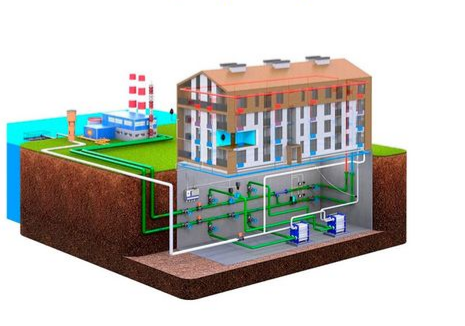What kind of heating is there: apartments, private houses and industry
Today we will touch upon the question of what kind of heating happens in the context of heating private houses and industrial buildings. In general, at the moment, three types of heating systems are clearly distinguished according to the nature of the provision and use of heat supply services:
- autonomous;
- individual;
- central.
Unlike other countries on the European continent, and in the future in the EU, Ukraine will be the only state with a developed system of central heat and hot water supply. In Europe, individual heating prevails, which is deployed by users on the basis of the energy carrier supplied to houses and apartments (gas and electricity). Heating system implies independence from backbone networks. This type of heating is promoted by the FOCUS brand, offering its pellet boilers.
Europeans do not understand the problem of poor heating at all; energy companies recommend maintaining the temperature in little-used rooms at 16-18 degrees Celsius, and in toilets and utility rooms - 10-12 degrees. For this reason, the indignation of Ukrainians about the heating not being turned on in high-rise buildings and schools is not perceived. For example, in Japan, schools are not heated, but during breaks children can warm their hands at heating points.
Central heating
The operating principle of central heating is as follows. A combined heat and power plant (CHP) heats water and transmits it through a pipeline to a heating point located in the basement of the house or in the house boiler room. From there it is transmitted to the risers of apartments and houses.
The beginning and end of the heating season is determined by the state and local governments. According to existing standards, heat is supplied to apartments after three days of a decrease in the average daily temperature to 8 degrees Celsius or lower.
The decisive factor for good heating is the operating pressure under which water is supplied to the apartments. This characteristic depends on the number of floors (it affects the radiators installed in the apartment; it is better to purchase ones for 10-13 bar; bimetallic radiators that can withstand up to 35 bar are considered the best choice):
- up to 5 floors - 3-5 bar;
- up to 9 floors - 5-7 bar;
- up to 10 floors - 7-10 bar.
As a rule, this type of heating should be the most expensive, but due to changes in energy tariffs, central heating may be more profitable than individual heating. However, consumers often express disapproval of the low temperature of radiators. Installing a heat meter makes it possible to pay only for the heat actually delivered. We offer you several basic diagrams of backup heating in apartments.
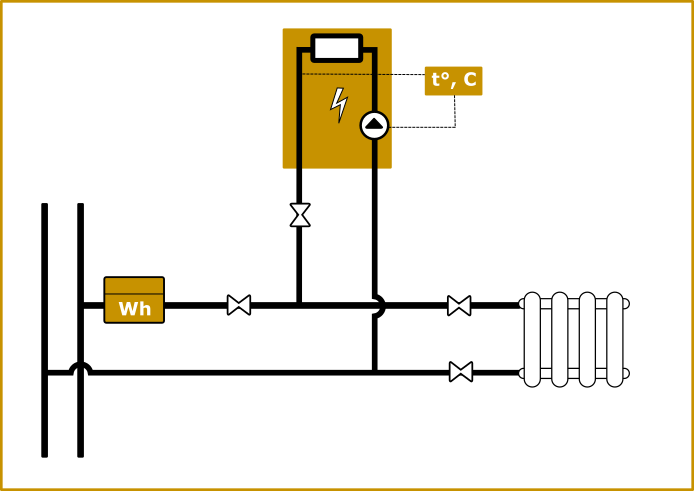
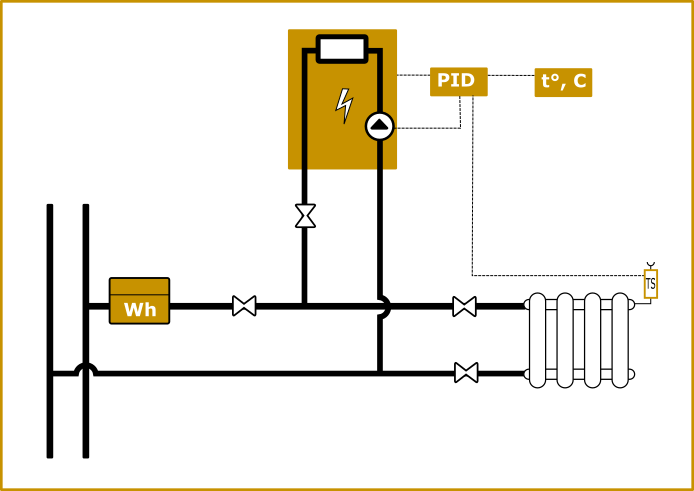
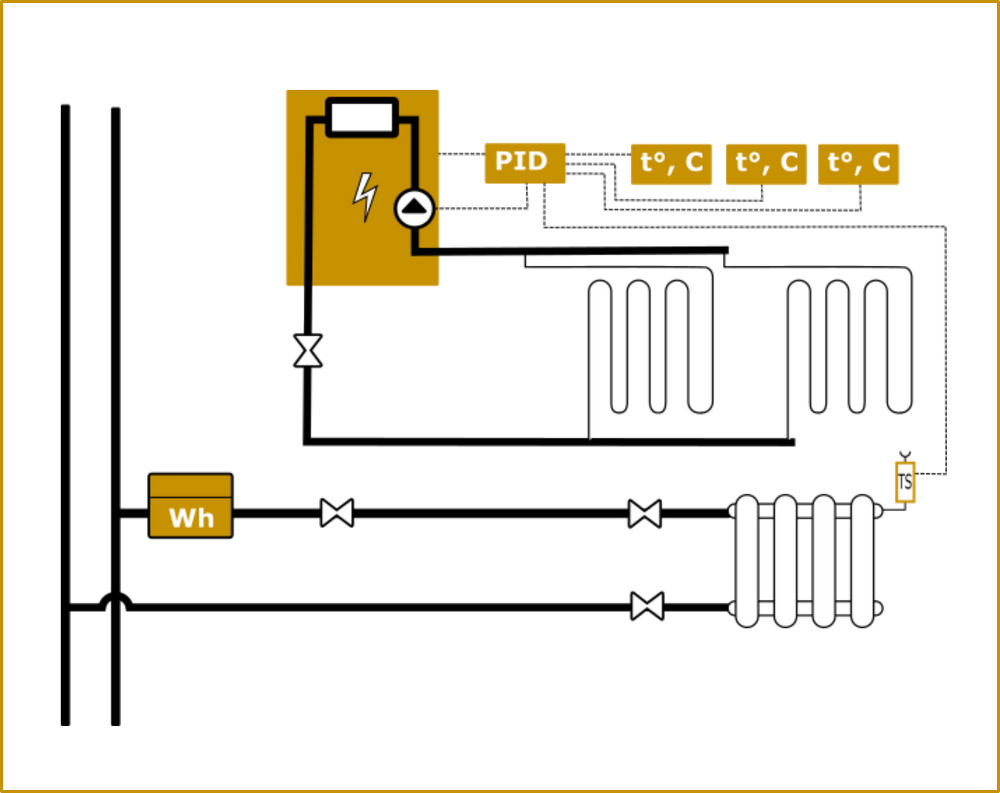

Depending on the availability of heat meters, tariffs are carried out differently:
- with heat meters in all apartments, the heat consumption is summed up and subtracted from the total consumption (for heating the entrance), the resulting result is divided among all residents;
- with partially installed heat meters, the cost of heating the entrance is calculated and divided among all residents. After this, the resulting amount from the data of the existing heat meters of the apartments and the maintenance of the house is subtracted from the total consumption. The remainder is divided among all residents without heat meters, adding the amount for heating the entrance;
- if there is no heat meter at the house or entrance, then payment is made according to the tariff of local authorities, as a rule, this is much more expensive.
Autonomous heating of an apartment building for residents is no different from central heating. But the heat is supplied from the boiler room located on the roof of the building, and not from the basement heating point. This arrangement allows you to save on pumping equipment. The power of the roof boiler house should not exceed 5 MW. If cluster heat supply is designed for several houses and the boiler room is located in a separate building, then there are no restrictions on power.
Our company offers pellet boilers for apartment buildings with climate control, as well as pellet steam generators for generating electricity and heat. OSBB can use hybrid electric boiler houses connected to the main power supply.
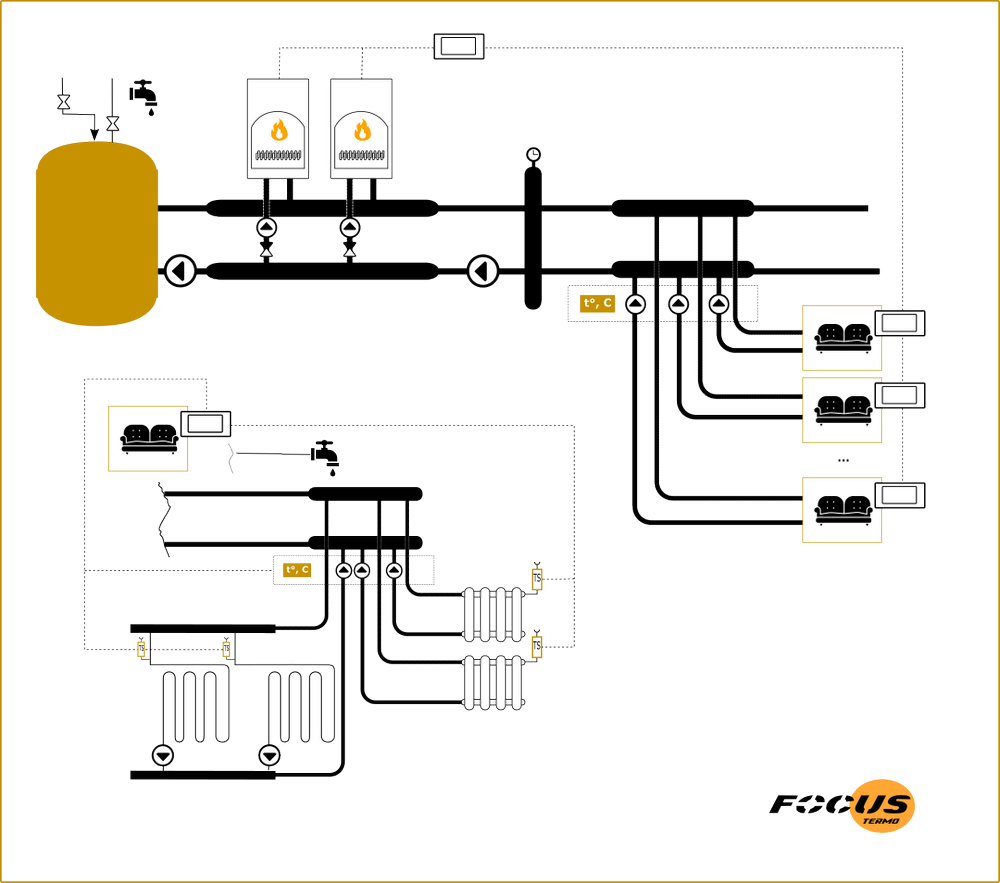

For private houses
Private houses can be connected to a central heating supply, but this is very rare, since it is unprofitable to run a heating main to private houses. Houses in cottage villages can be connected to a cluster heat supply system, that is, an autonomous pellet boiler house and a mini-CHP using pellets of the required power.


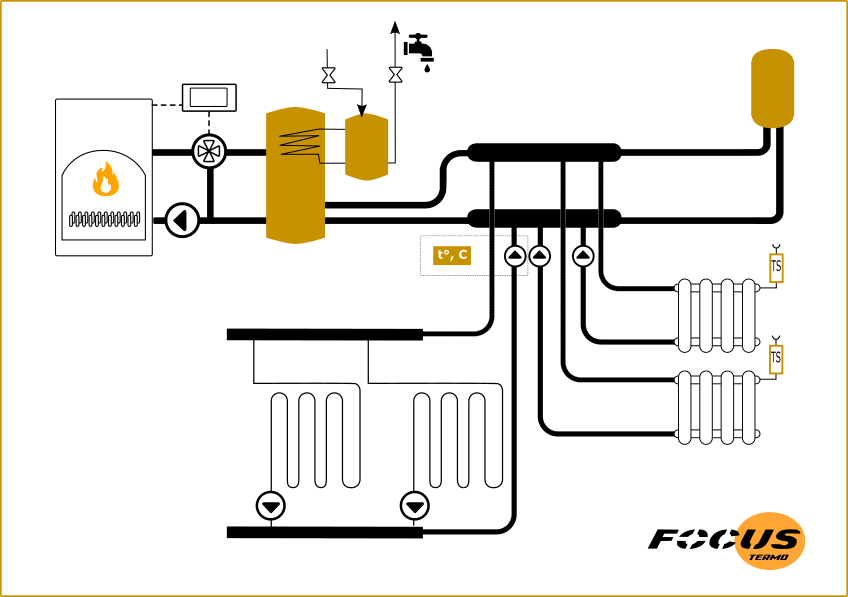
Typically, individual heating is used with gas, electricity or autonomous heating based on TT circuits and heat pumps. Tariffs for gas and electricity are set by the state. The total bill for heating a private house without insulation is very high, regardless of the type of energy source; cost reduction can only be achieved by using controlled electric heating in combination with a solar power plant at a “green tariff”. In the southern regions, heating from solar collectors shows high efficiency.
Types of heating are classified according to the following principles:
- by type of energy carrier: gas, solid fuel, electric, geothermal, solar;
- by coolant: water, steam, air;
- by heat transfer method: convection (infrared and others) and radiant;
- by hydraulic piping method: with gravitational and forced circulation;
- by coolant temperature: low temperature (warm floors) and high temperature (TT boilers).
What kind of heating is there in private houses? Water and air heating (for frame houses), from gas, solid fuel, electric, geothermal (heat pumps) and solar energy resources are most often used. There are also separately popular “warm floors” that can work as infrared and water. Electric heating as backup Mainly used in apartments, in some cases, in private houses. Steam heating is used at thermal power plants, since the same pellet steam generators allow you to generate heat and electricity simultaneously.
Pellet heating formally refers to solid fuel technology; thanks to automation and independence from main networks, the fuel is considered autonomous.
What kind of heating is there in industry?
Industrial premises use water and air heating. In some cases, heated floors are used, for example, when it is necessary to heat the workplace. The fact is that factory premises have a large area and volume and are not passive, so it is advisable to use air heating and heating of workplaces. For these purposes, depending on the wiring, all three types of room temperature support are used.
Production areas are usually heated by a factory boiler room. As a rule, the equipment runs on coal. More modern solutions involve heating of production workshops pellets due to the installation of low-maintenance equipment and cascade connection of boilers. The number of circuits is not limited, the power of the boiler room is dynamically expanded.
A pellet boiler room is characterized by lower fuel costs and the ability to deploy three types of heating with climate control at once: water, air and heated floors.






